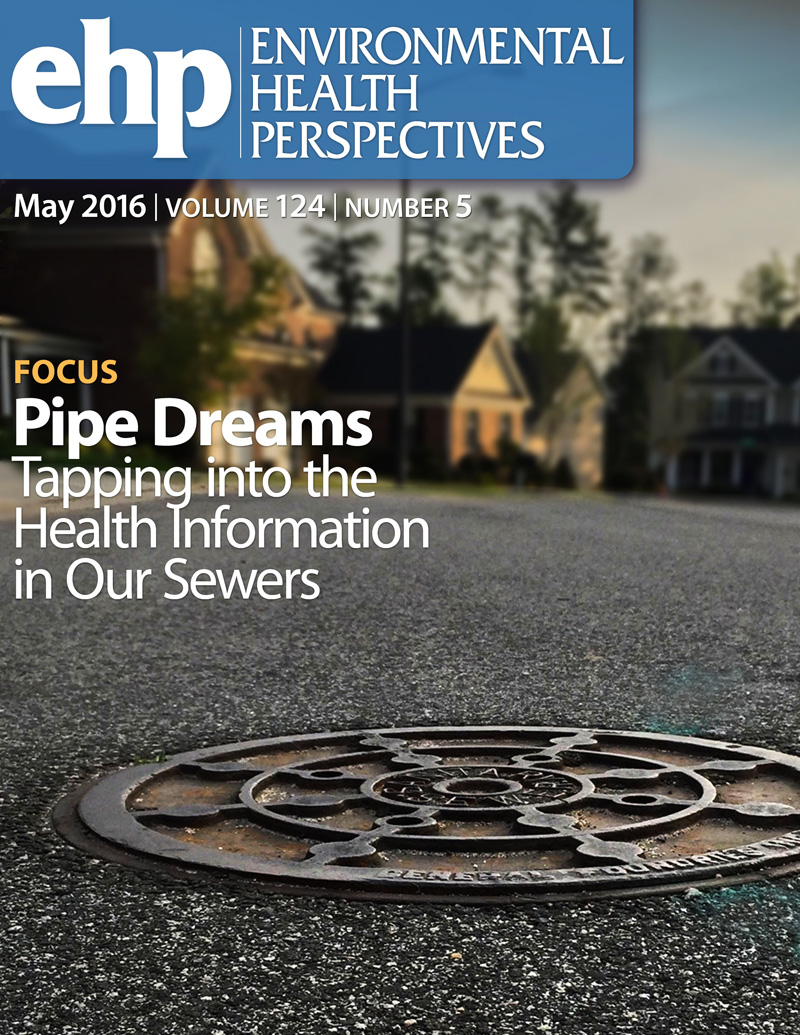Effect modification by socioeconomic status on the associations between early placental protein damage and exposure to ambient air PM2.5 chemical components.
IF 10.1
1区 环境科学与生态学
Q1 ENVIRONMENTAL SCIENCES
引用次数: 0
Abstract
BACKGROUND Ambient fine particulate matter (PM2.5) exposure is associated with systemic protein damage in pregnant women. However, its effect on protein damage in human placentas is unclear. OBJECTIVES We estimated the associations of PM2.5 and chemical component exposures with advanced oxidation protein products (AOPP) in placental villi tissues before 13 weeks of gestation. METHODS We enrolled 165 women with unintended normal early pregnancy (NEP) who requested induced abortion during the first trimester and 165 women with early pregnancy loss (EPL) who also requested induced abortion (2017-2022). Maternal daily PM2.5, black carbon (BC), organic matter (OM), sulfate, nitrate, and ammonium exposures from the 12th week before ovulation to villi collection were estimated using data accessed from the Tracking Air Pollution in China platform. Associations of pollutant exposures during the 30 days before villi collection, during the post-conception period (from ovulation to villi collection), and during the periovulatory period (from the 12th week before to 3rd week after ovulation) with villi AOPP were estimated and compared between the NEP and EPL groups. Additionally, effect modifications by socioeconomic status expressed in family monthly income per capita were estimated using stratified distributed lag non-linear models. RESULTS Thirty-day cumulative and average post-conception exposures to higher concentrations of PM2.5, BC, and OM were associated with higher villi AOPP in all subjects and both groups. Thirty-day cumulative effects of per interquartile range increase in the residuals of BC and OM were robust in EPL (βs [95% CI] of villi AOPP were 111.22% [17.96%, 278.24%] and 93.87% [20.63%, 211.56%]), but were not robust in NEP. The associations of per interquartile range increase in the concentrations of BC and OM at some lag days with higher villi AOPP were stronger in low-income stratification (with the ranges of βs of villi AOPP were 10.51-11.99% and 8.08-12.50%) than those in medium-income stratification (3.19-3.80% and 1.95-3.73%) and high-income stratification (2.57-2.78% and 2.51-2.72%). Periovulatory OM exposure was positively associated with villi AOPP in EPL but not in NEP, and the susceptible periods to PM2.5 and other four components were 1-4 weeks earlier in EPL than in NEP. DISCUSSION Maternal PM2.5, BC, and OM exposures were positively associated with oxidative protein damage in early placenta. The associations were stronger in women with EPL or low-income. https://doi.org/10.1289/EHP15170.社会经济地位对早期胎盘蛋白损伤与环境空气PM2.5化学成分暴露关系的影响
环境细颗粒物(PM2.5)暴露与孕妇全身蛋白质损伤有关。然而,其对人类胎盘蛋白损伤的影响尚不清楚。目的:评估妊娠13周前PM2.5和化学成分暴露与胎盘绒毛组织高级氧化蛋白产物(AOPP)的关系。方法本研究纳入了165例妊娠早期要求人工流产的意外正常早孕(NEP)妇女和165例妊娠早期流产(EPL)妇女(2017-2022年)。利用中国空气污染追踪平台获取的数据,估计排卵前12周至绒毛收集期间孕妇每日PM2.5、黑碳(BC)、有机物(OM)、硫酸盐、硝酸盐和铵的暴露情况。在收集绒毛前30天、受孕后(从排卵到收集绒毛)和排卵期(从排卵前12周到排卵后3周)污染物暴露与绒毛AOPP的关系进行了估计和比较NEP组和EPL组。此外,使用分层分布滞后非线性模型估计社会经济地位对家庭月人均收入的影响。结果:在所有受试者和两组中,怀孕后30天累积和平均暴露于高浓度PM2.5、BC和OM与较高的绒毛AOPP相关。每四分位数范围内BC和OM残留量增加的30天累积效应在EPL中很强劲(绒毛AOPP的βs [95% CI]分别为111.22%[17.96%,278.24%]和93.87%[20.63%,211.56%]),但在NEP中不强劲。随着绒毛AOPP升高,部分滞后日BC和OM浓度的每四分位数范围增加的相关性在低收入层(绒毛AOPP βs范围为10.51 ~ 11.99%和8.08 ~ 12.50%)强于中等收入层(3.19 ~ 3.80%和1.95 ~ 3.73%)和高收入层(2.57 ~ 2.78%和2.51 ~ 2.72%)。排卵期OM暴露与EPL的绒毛AOPP呈正相关,而与NEP无关,EPL对PM2.5和其他四种成分的敏感期比NEP早1 ~ 4周。母体PM2.5、BC和OM暴露与胎盘早期氧化蛋白损伤呈正相关。这种关联在EPL或低收入女性中更为明显。https://doi.org/10.1289/EHP15170。
本文章由计算机程序翻译,如有差异,请以英文原文为准。
求助全文
约1分钟内获得全文
求助全文
来源期刊

Environmental Health Perspectives
环境科学-公共卫生、环境卫生与职业卫生
CiteScore
14.40
自引率
2.90%
发文量
388
审稿时长
6 months
期刊介绍:
Environmental Health Perspectives (EHP) is a monthly peer-reviewed journal supported by the National Institute of Environmental Health Sciences, part of the National Institutes of Health under the U.S. Department of Health and Human Services. Its mission is to facilitate discussions on the connections between the environment and human health by publishing top-notch research and news. EHP ranks third in Public, Environmental, and Occupational Health, fourth in Toxicology, and fifth in Environmental Sciences.
 求助内容:
求助内容: 应助结果提醒方式:
应助结果提醒方式:


